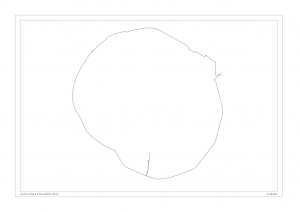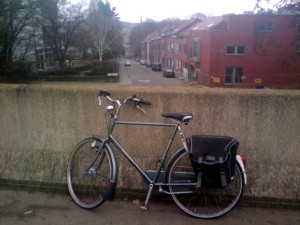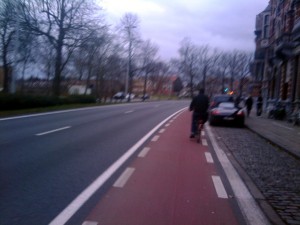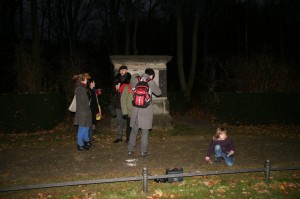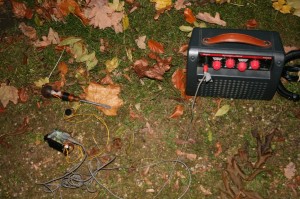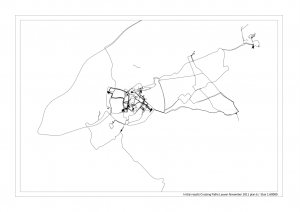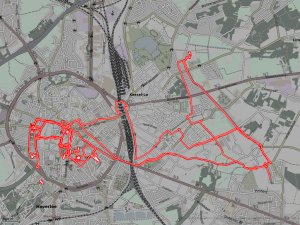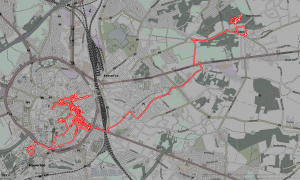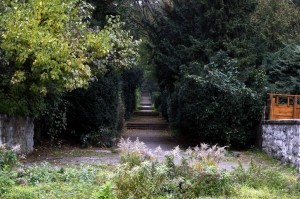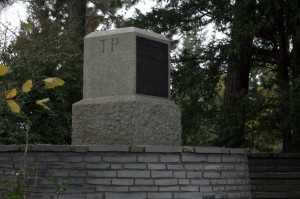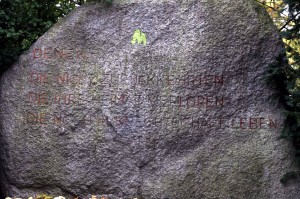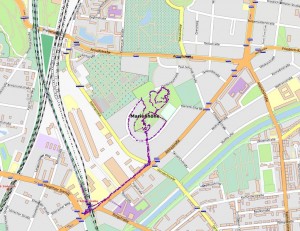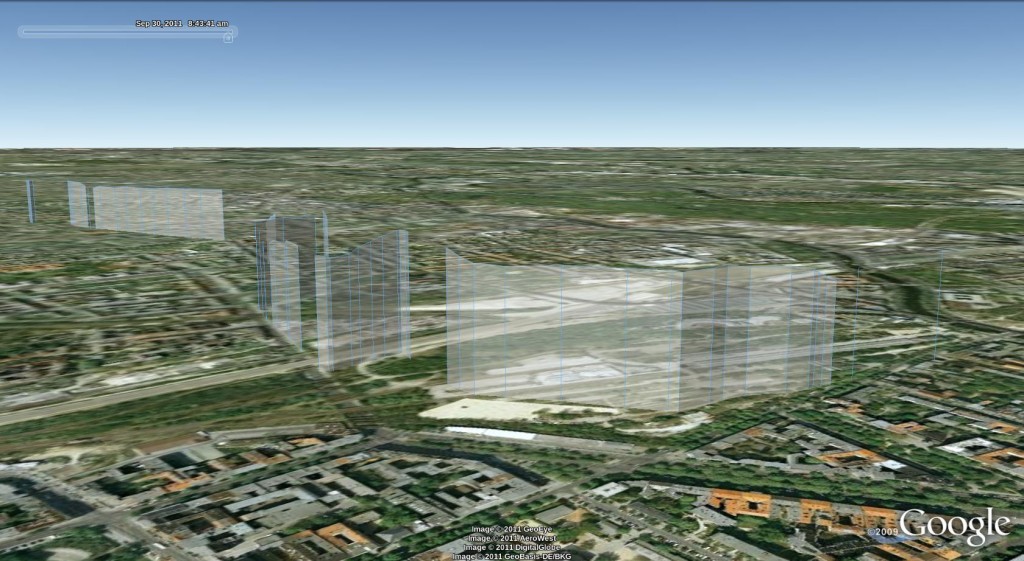With Iain Sinclair’s rather more epic journey in my mind as well as a book that I last read 22 years ago (thanks Dave), I decided to do what Riddley Walker (Russel Hoban 1980) would call a Fool’s Circel 9wys which is to say a circular trip. The impulse for this was purely cartographic, noticing that Leuven has a rather nicely round ring road, a fact I am keenly aware of because I am here this week, working on Crossing Paths, our new project, which takes off where A Day in the Life left off and will be premiered as part of the Artefact festival in Stuk next year.
Getting the volunteers data back from the GPSs they’ve been going around with, I like to think of Leuven like a clock face. Most of the activity (the volunteers of Stuk are mostly students) seems to take place between 2 and 6 o’clock. Perhaps that’s also temporarily true. We’ll find out.
Doing something that would get me thrown out of any psychogeographic association (I’d be in good company there), I set off on a bike loaned from Stuk and starting at 6 o’clock, cycled through a grey windy afternoon. I thoroughly recommend this to anyone who wants to practice psychogeography in Leuven. For one thing, some of the route seems to be illegal if not uncomfortable in the extreme by foot but perfectly doable by bike. This is because the ring road pretty soon (about 8 o’clock) took on the quality of an urban freeway / motorway, the only thing separating me from the intermittently thundering lorries being a painted white stripe between the hard shoulder and the pressed metal crash barriers.
Good old Belgium I thought, passing the Stella Artois factory on a stretch of flyover, it might not be scenic cycling, but at least it is possible at all.
Trying to resist the pull of the roads leading into the city, (what’s the reverse of centripetal force?), I navigated by trying to follow the bleaker, industrial choice, usually to my left which only once tripped me up as at about 2 o’clock, approaching the train station, the ring road changes character completely and transforms into a shopping street leading into town. I was able to adjust, however, and found myself on a different character of urban freeway, much more embedded into the fabric of the city.
I have to say, fun was had by all but because I was alone, that’s not saying too much.

